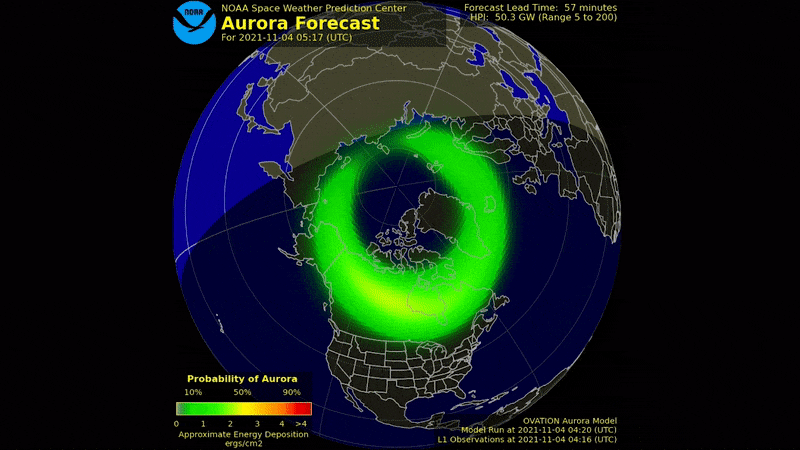Solar storm brings the Northern Lights to the northern US

A strong solar storm is creating aurora-friendly conditions as far south as Pennsylvania, Iowa and Oregon this week.
According to the National Oceanic and Atmospheric Administration (NOAA) Space Weather Prediction Center, the sun released two coronal mass ejections (CME) on Nov. 1 and Nov. 2. CMEs are eruptions in the sun's atmosphere that blast a magnetic field into space — and in this case, toward Earth.
When these magnetic disruptions hit Earth's upper atmosphere, they can cause geomagnetic storms. These storms are capable of disrupting satellite communications and other electronics. They also cause particles in the magnetic field surrounding Earth to emit light, creating the ethereal show known as the aurora.
The aurora, also known as the northern or southern lights, usually stays at high latitudes, near the poles. But a strong solar storm can make the phenomenon visible further south. According to Sky News, the latest geomagnetic disturbance brought views of the aurora to skywatchers across the United Kingdom. Aurora sightings were also reported on Oct. 3 in the Dakotas, Minnesota, Montana, Wisconsin and New England.
CMEs travel at different speeds, and the first magnetic blast from the sun arrived at 2:42 p.m. ET on Nov. 3, according to NOAA. Sunset on Nov. 4 may bring further opportunities for aurora-viewing in the Lower 48, according to the agency.
When forecasting the aurora, scientists use something called the Planetary K-index, which measures geomagnetic storms on a 9-point scale. Five or above indicates a geomagnetic storm. As of Nov. 4, the K-index was hovering between 6 and 7. The Space Weather Prediction Center also provides a 30-minute forecast of auroral activity showing the location and intensity of the aurora. The center also provides a viewing chart with major cities' magnetic latitude and the K-index typically necessary for viewing an aurora at those magnetic latitudes. For example, at a K-index of 7, the aurora can be seen as far south as Seattle.
The aurora can be unpredictable, but the same rules apply for aurora-spotting as for star-watching: The best views are likely to be found on cloudless nights away from city lights. You don't have to be right under the lights to see them; according to NOAA, the aurora can be visible from hundreds of miles away if the conditions are right.
Sign up for the Live Science daily newsletter now
Get the world’s most fascinating discoveries delivered straight to your inbox.
Originally published on Live Science.

Stephanie Pappas is a contributing writer for Live Science, covering topics ranging from geoscience to archaeology to the human brain and behavior. She was previously a senior writer for Live Science but is now a freelancer based in Denver, Colorado, and regularly contributes to Scientific American and The Monitor, the monthly magazine of the American Psychological Association. Stephanie received a bachelor's degree in psychology from the University of South Carolina and a graduate certificate in science communication from the University of California, Santa Cruz.









